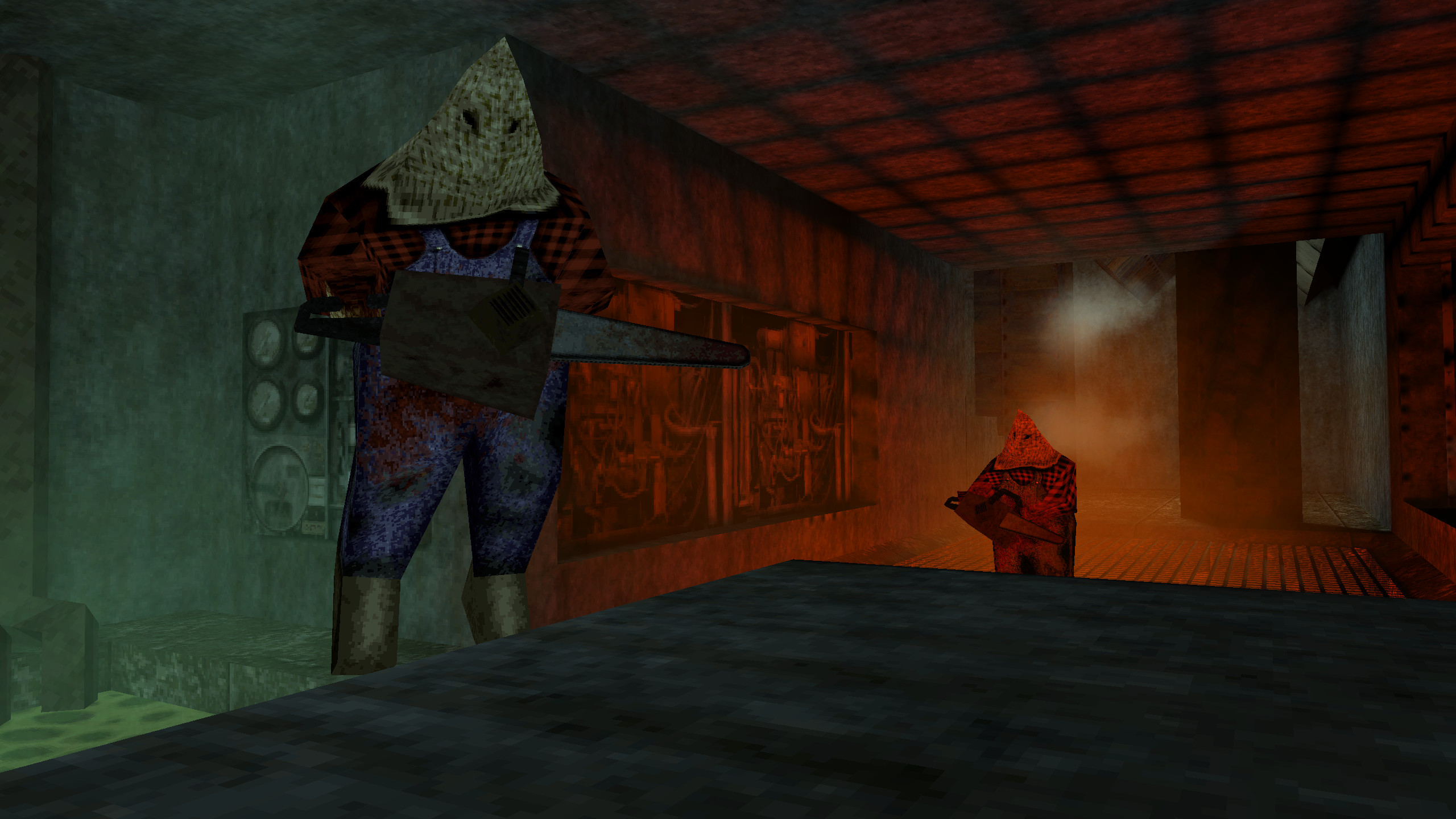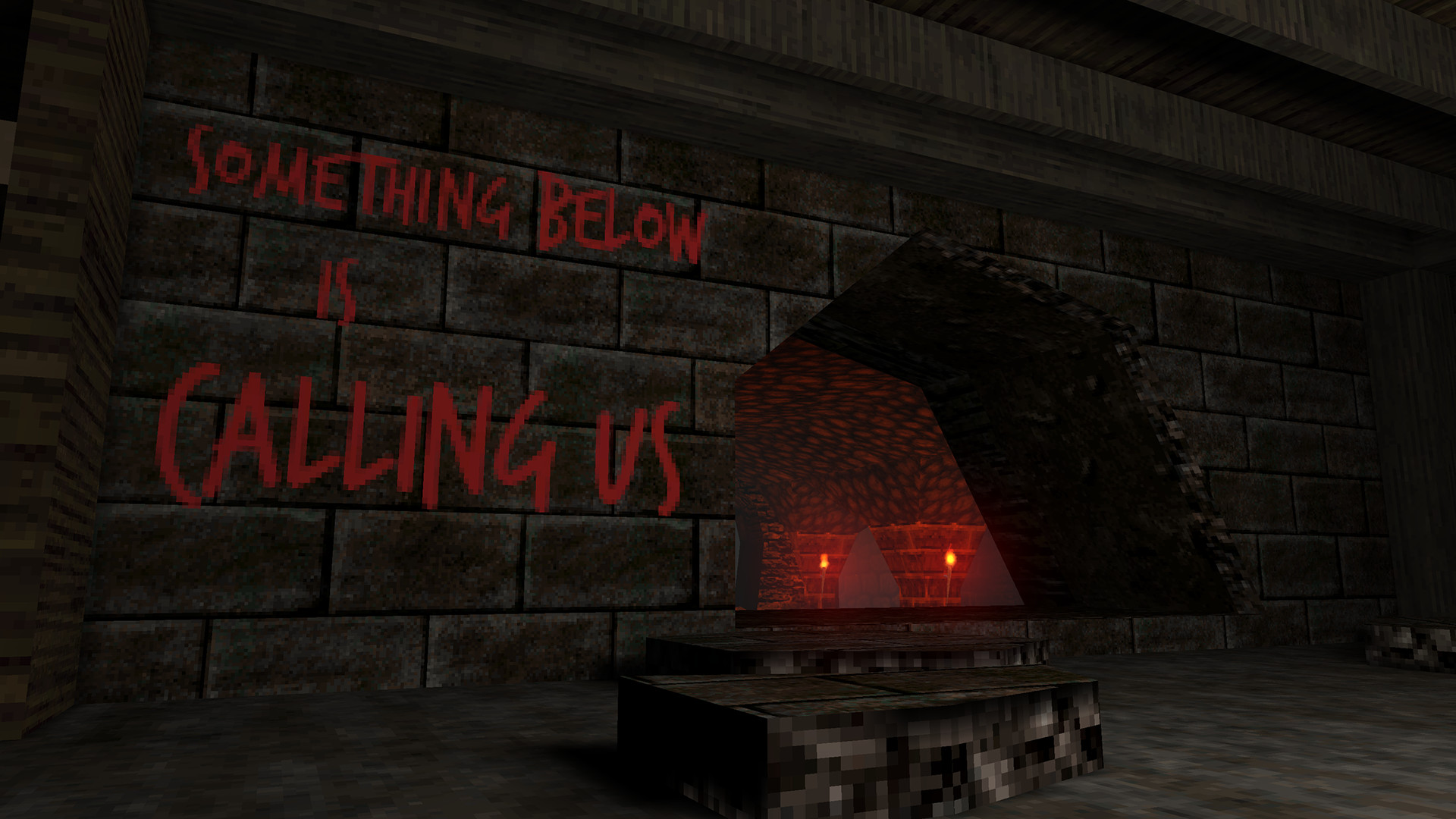Dusk is a game that revels in violence as though it was actually from the era whose graphical style it apes. If there’s anything that will take you back to Hollywood’s blood soaked days of old then fast-paced shooting and gibs for days will do it.
Of course there are a few things that luckily have changed since those days. The standardization of shooter controls for one, and a serious upgrade in resolution and aspect ratio for another. Fortunately these advancements have been brought along for the ride and thank god for that.

Blood, Blood, Blood
So Dusk is aiming its sights firmly at the late 90’s era of FPS, more specifically it is seeking to recapture the gory magic that Quake found. Dusk primarily does this in 3 ways. Firstly, it has similar polygonal graphics, secondly it has a one word title, and finally it is filled with blood and gore.
Of course there is one other element which really stands out about that particular era, and that is the rapid frenetic pace of the gameplay. You zip about the maps like you’re wearing roller skates, you jump high, take no fall damage and can pump out lead like it’s going out of fashion.
As well as being a defining factor of the type of game that Dusk is, the speed is also your main means of defense. No regenerating health and a tide of enemy attacks means that stopping for cover is rarely an option. Instead you’re supposed to keep moving to avoid damage while dipping in and out of cover and firing back.

A Distinct Feature
Although Dusk seeks to ape a certain era of shooters, that doesn’t mean it doesn’t bring it’s own innovations to the table. There are at least a couple fresh new moves that help give Dusk a distinct feeling.
Just like in Quake, there is no reloading in Dusk. That would only slow things down after all. Instead when you press the reload button you twirl your guns around before firing again. Oftentimes in physically impossible ways. It’s only a cosmetic feature, mind you. It achieves nothing but looking cool as hell if performed at the right time. This little quirk gives the game an explicit style. It also helps Dusk gameplay look sweet in YouTube videos.
The second new feature is the sliding dash. It takes your already hyperactive pace and then ramps it up to 11. It’s insanely useful for avoiding enemy attacks, both sliding under them as well as shunting you forward out of harm’s way. It’s most useful against bosses, and allows Dusk to get away with tight maps that wouldn’t have worked in Quake.

Problems in A-Minor
Dusk does have it’s problems but they’re pretty minor when compared to all the things that the game does right. Throughout its three episodes it does allow some maps to get a little too tight. Your speed and agility work well in the huge open areas, but in tight corridors you just bash into walls.
There is a loss of direction in a couple of the maps, which was an issue in older shooters too. There’s also the constant problems of coloured key puzzles and the occasionally brutal difficulty. Fortunately, this last point at least is assuaged by the inclusion of an ‘accessible’ difficulty setting.
Regardless of its issues, Dusk does a good job of paying homage to the classic era of shooters. The addition of a multiplayer is the cherry on the bloody cake. The mode may not be insanely popular as of yet, but modern LAN parties for enthusiasts are just around the corner.

Pros
- Fast-paced combat
- Smooth and stylish gameplay
- Interesting map and enemy design
- Captures 90’s FPS perfectly
Cons
- Later maps can get confusing
- Some areas are too tight
- Still has key puzzles
Conclusion
Dusk is a perfect blend of homage and update. It manages to pull off the facets of 90’s FPS that worked without getting dragged down by them. While it does have its flaws they’re easy to look past. With multi-player mode finally added in the full release it really is the perfect package.



